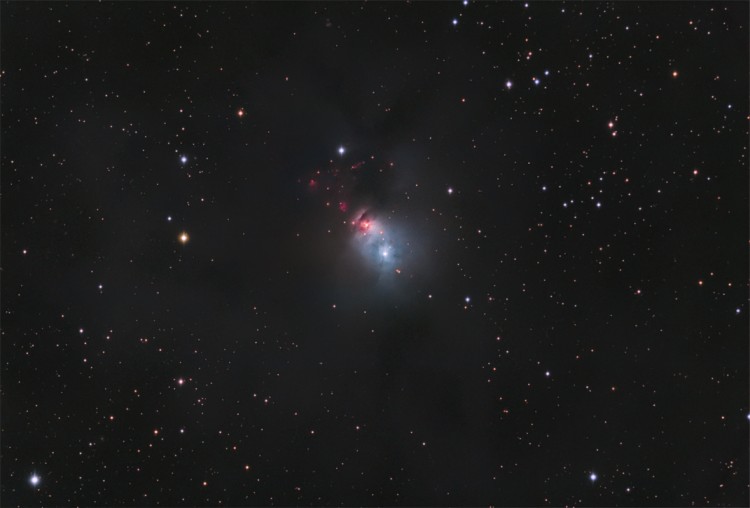
|
Credit & Copyright: Visible Image (w/rollover) -
Steve Cannistra
(StarryWonders)
Infrared Image - R. A. Gutermuth (Harvard-Smithsonian CfA) et al. JPL-Caltech, NASA
Explanation:
Dusty NGC 1333
is seen in visible light as a
reflection nebula,
dominated by bluish hues characteristic
of starlight reflected by dust.
But at longer infrared wavelengths, the
interstellar
dust itself glows.
Moving your cursor over the picture will match up a
visible
light view with a false-color infrared image of the region from the
Spitzer Space Telescope.
The penetrating
infrared view unmasks youthful stars
that are otherwise obscured by the
dusty clouds
that formed them.
Also revealed are greenish streaks and splotches that seem to
litter the region.
The structures trace the glow of
cosmic jets blasting away
from emerging young stellar objects and plowing into the
cold cloud material.
In all, the chaotic
environment likely resembles one in which our own
Sun formed over 4.5 billion years ago.
NGC
1333 is a mere 1,000 light-years distant in the constellation
Perseus.
Infrared Image - R. A. Gutermuth (Harvard-Smithsonian CfA) et al. JPL-Caltech, NASA
|
January February March April May June July August September October November December |
| |||||||||||||||||||||||||||||||||||||||||||||||||||||||
NASA Web Site Statements, Warnings, and Disclaimers
NASA Official: Jay Norris. Specific rights apply.
A service of: LHEA at NASA / GSFC
& Michigan Tech. U.
Based on Astronomy Picture
Of the Day
Publications with keywords: reflection nebula - infrared - star formation
Publications with words: reflection nebula - infrared - star formation
See also:
- APOD: 2025 September 19 Á The NGC 6914 Complex
- APOD: 2025 July 10 Á Lynds Dark Nebula 1251
- APOD: 2025 June 23 Á W5: Pillars of Star Formation
- APOD: 2025 April 28 Á Gum 37 and the Southern Tadpoles
- APOD: 2025 March 26 Á Star Formation in the Pacman Nebula
- APOD: 2025 February 23 Á Saturn in Infrared from Cassini
- Reflections on VdB 31
